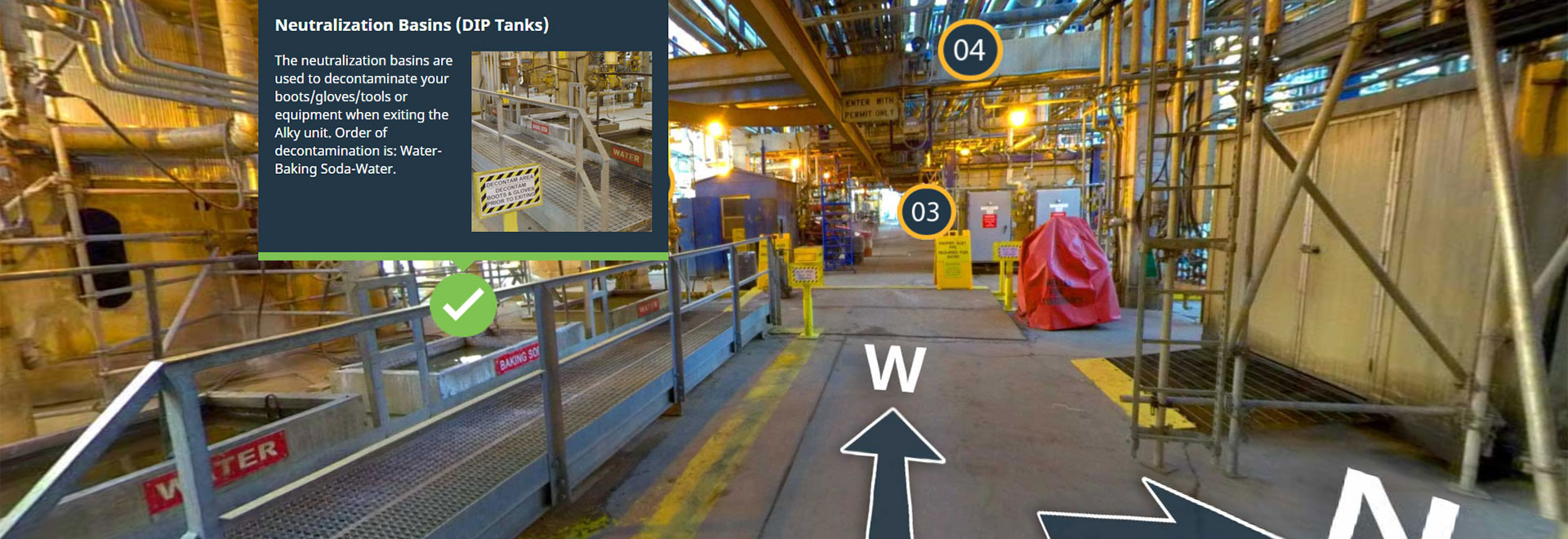
5 Ways to Improve Your Common Safety Orientation Using 360 Video
Organizations are increasingly turning to technology solutions for their common safety orientation courses. The challenges of maintaining classroom space, administrative overhead, and ensuring consistent safety culture messaging have led many companies to explore new training methods.
Emerging Solutions in Common Safety Orientation Training
Over the past decade, many organizations have transitioned common safety orientation online courses from print-based and classroom-based training to eLearning solutions. The advantage is that employees can complete their training remotely before arriving on-site, ensuring consistent messaging across all locations. However, this method can sometimes feel disconnected from the real-life workplace experience.
Over the last ten years many organizations have taken the leap and transitioned print-based and classroom-based safety orientations into eLearning courses. The advantage is that the training can be taken off-site before work begins, and the messaging remains consistent across the organization. The disadvantage is that the training can quickly become removed from the day to day realities of what it is like to be on-site.
Enter an Emerging Solution: 360 Video
Unlike fully simulated virtual reality environments, 360 Video allows trainees to experience an exact visual representation of your facility in 360 degrees. This transforms common safety orientation training from an abstract exercise into an immersive, hands-on experience. New employees and contractors can onboard efficiently while avoiding on-site safety risks.
By integrating 360 Video into your safety orientation course, organizations can enhance engagement and retention, ensuring that trainees understand workplace safety standards in a realistic and meaningful way.
Top 5 Ways to Leverage 360 Video in Safety Orientation Courses
- Navigation: “How Do I Get There?”
Traditional maps provide a 2D representation of a 3D space. Many find them hard to visualize. 360 Video offers an immersive navigation experience. It helps new staff, contractors, and visitors explore facilities before they arrive. This is especially useful for large industrial settings, such as construction, oil and gas, and manufacturing.
- Onboarding: “What Will it Be Like?”
Starting a new job is overwhelming. Common safety orientation online, paired with 360 Video, allows employees to experience their work environment virtually before arriving. This reduces anxiety, improves preparedness, and boosts confidence from day one.
- Hazard Identification: “What Hazards Do I Need to Know About Onsite?”
Hazard identification is a crucial part of any safety orientation course. With 360 Video, trainers create immersive scenarios. These highlight potential dangers and demonstrate critical controls and safeguards. Interactive assessments can also test learners’ ability to identify hazards effectively.
- Safety Culture: “Does This Organization Care About My Safety?”
A strong safety culture is essential. 360 Video reinforces company values by visually demonstrating safe workplace practices and emergency procedures. It also ensures compliance with Common Safety Orientation (CSO) standards. Employees see firsthand that safety is a priority, which builds trust and fosters a proactive mindset.
- Branding: “Is This Training Authentic?”
First impressions matter. The common safety orientation course is a rare opportunity to create a lasting impact. 360 Video enhances authenticity by showcasing real-world visuals of facilities, branding elements, and a unique training experience.
Conclusion
Whether supplementing an eLearning safety orientation or serving as a complete onboarding experience, 360 Video is invaluable. Once developed, it can also support recruitment efforts. Potential employees get a realistic preview of their workplace.
By using 360 Video in your common safety orientation online Alberta, organizations enhance training effectiveness. This improves engagement and ensures that safety remains a top priority.
Interested in learning more about how interactive 360 videos can improve your training?
Let’s Chat!
